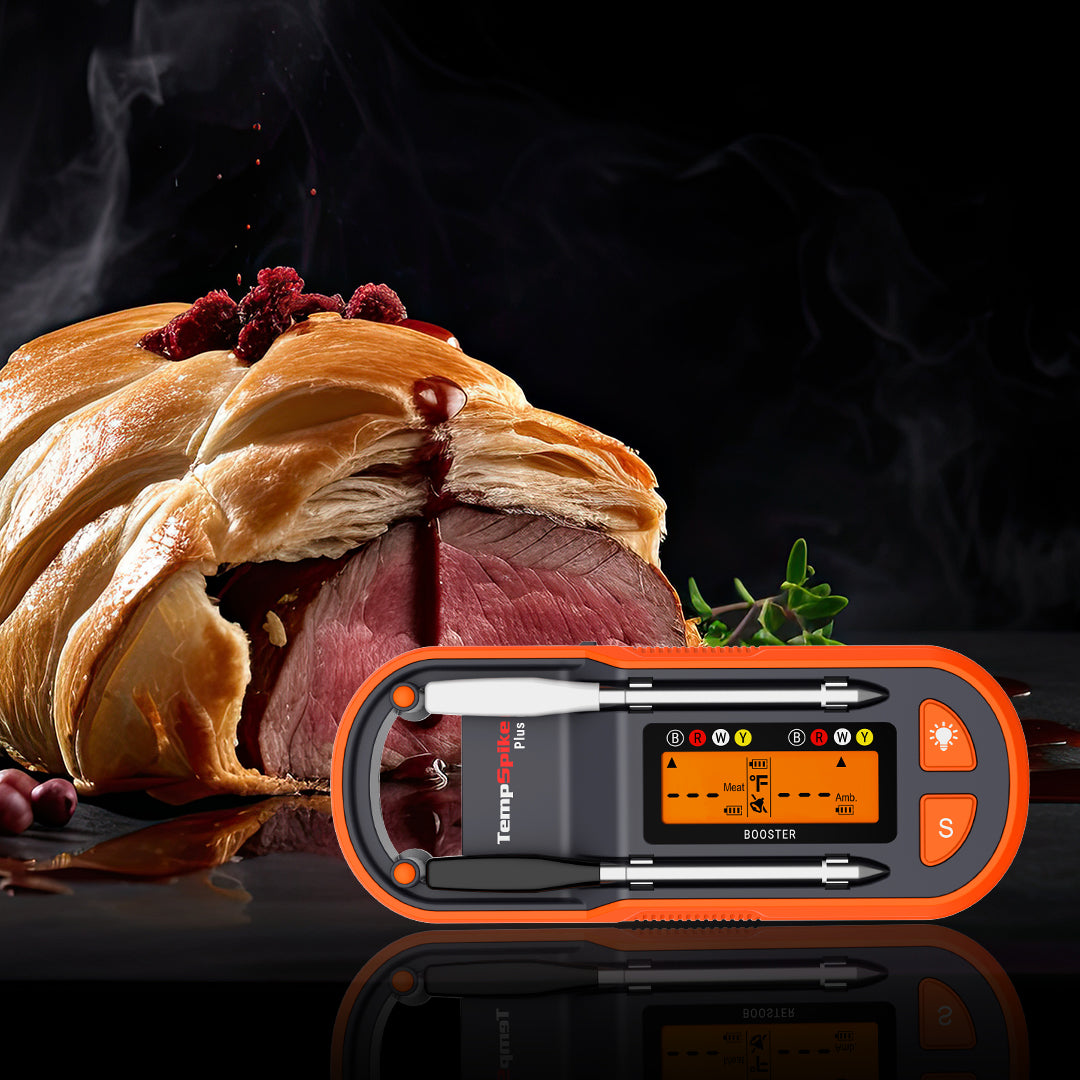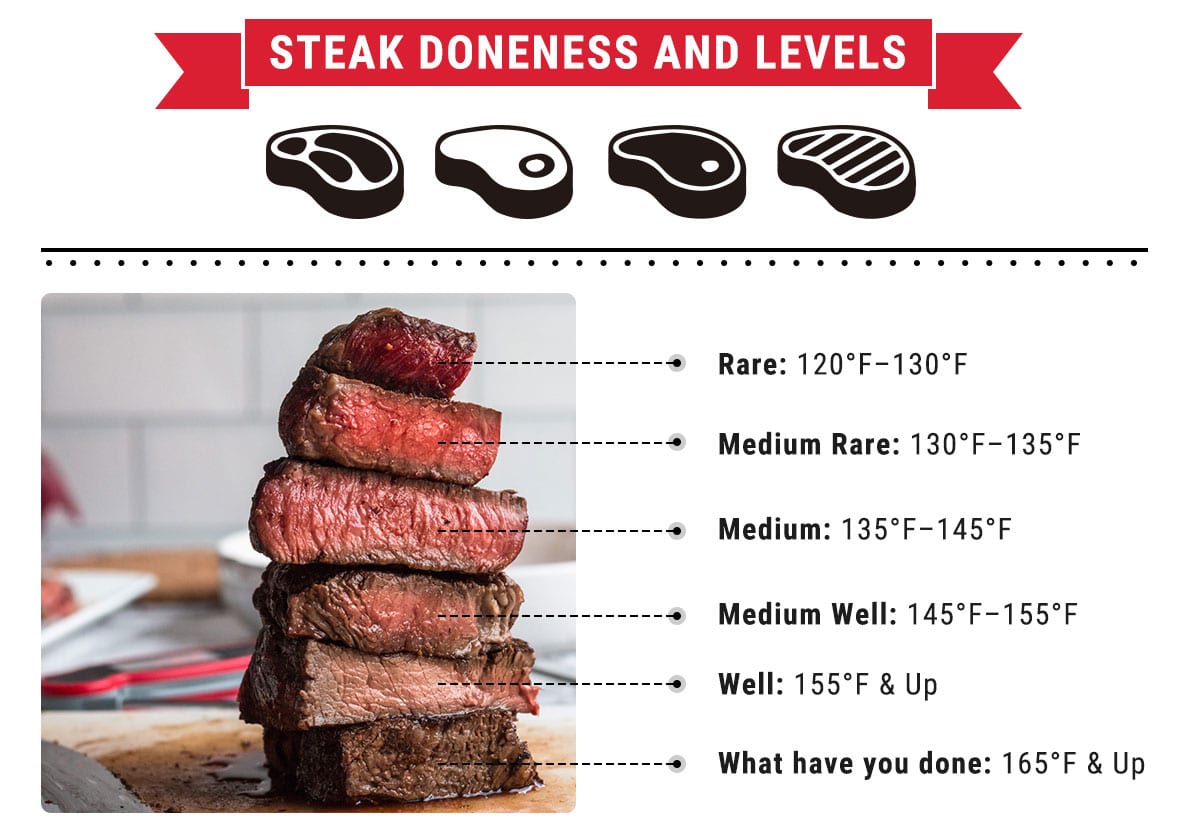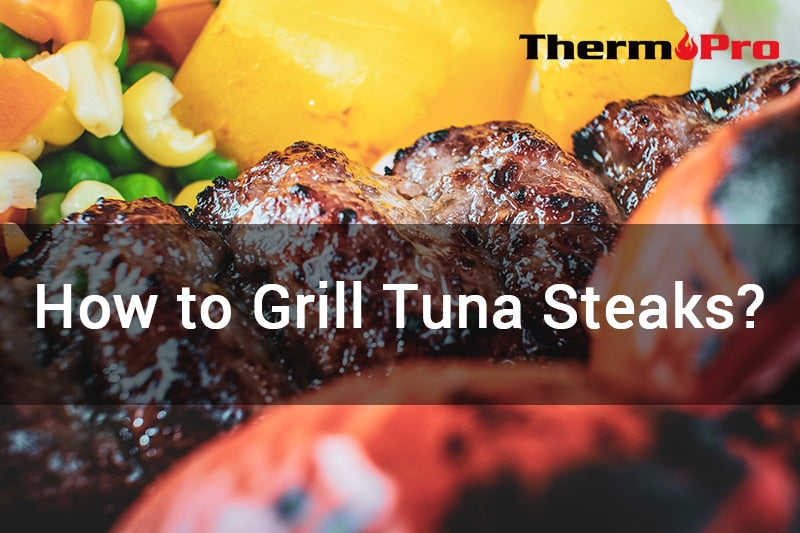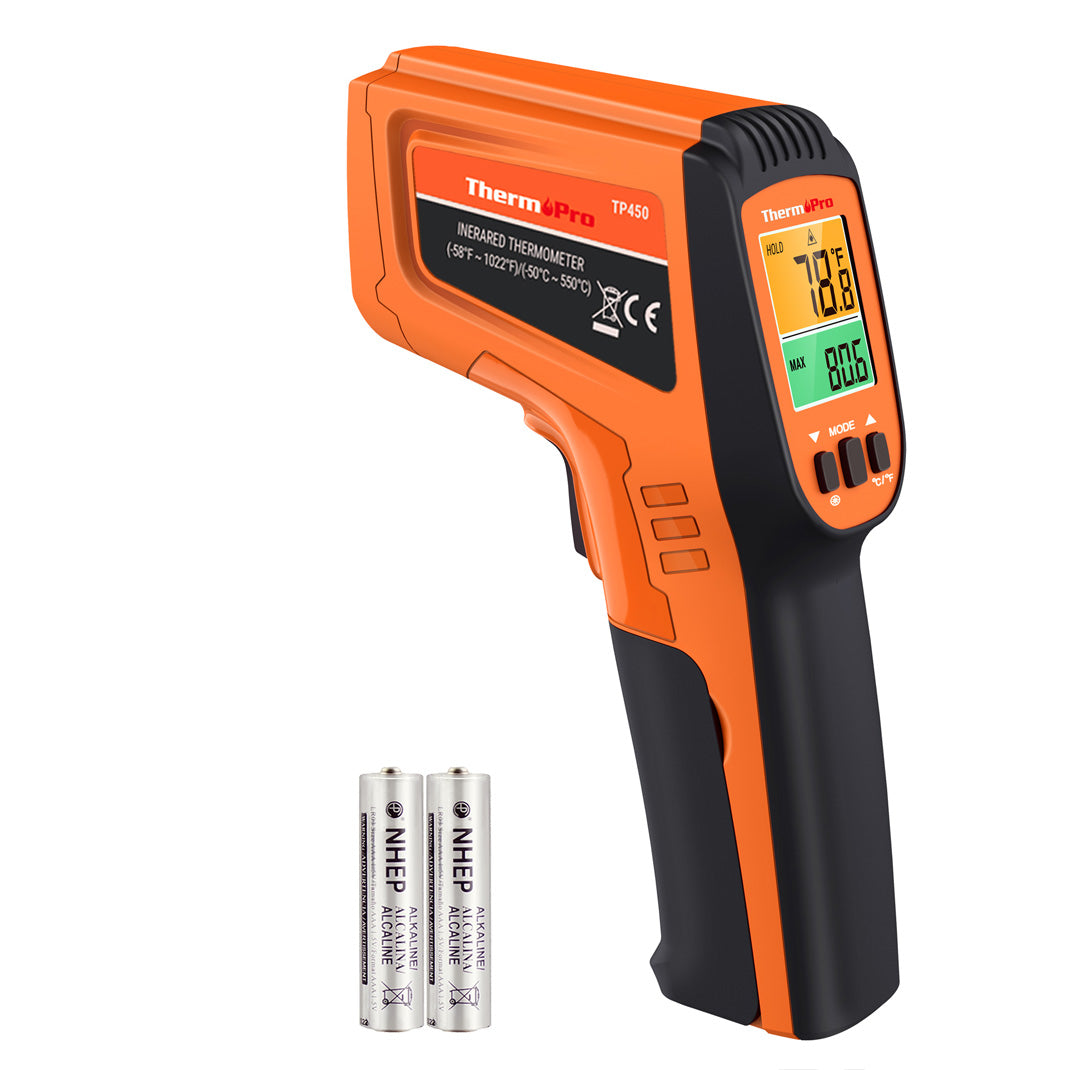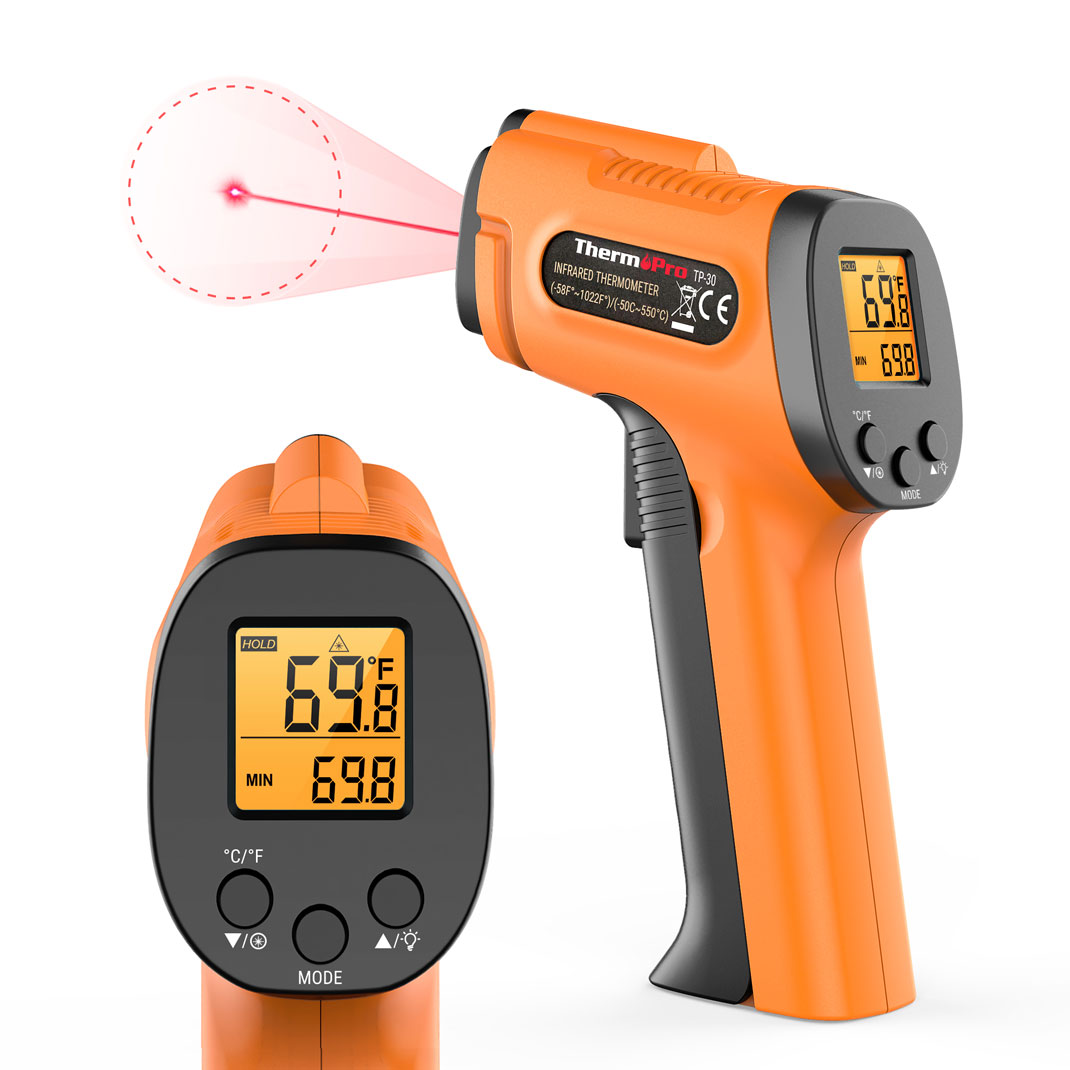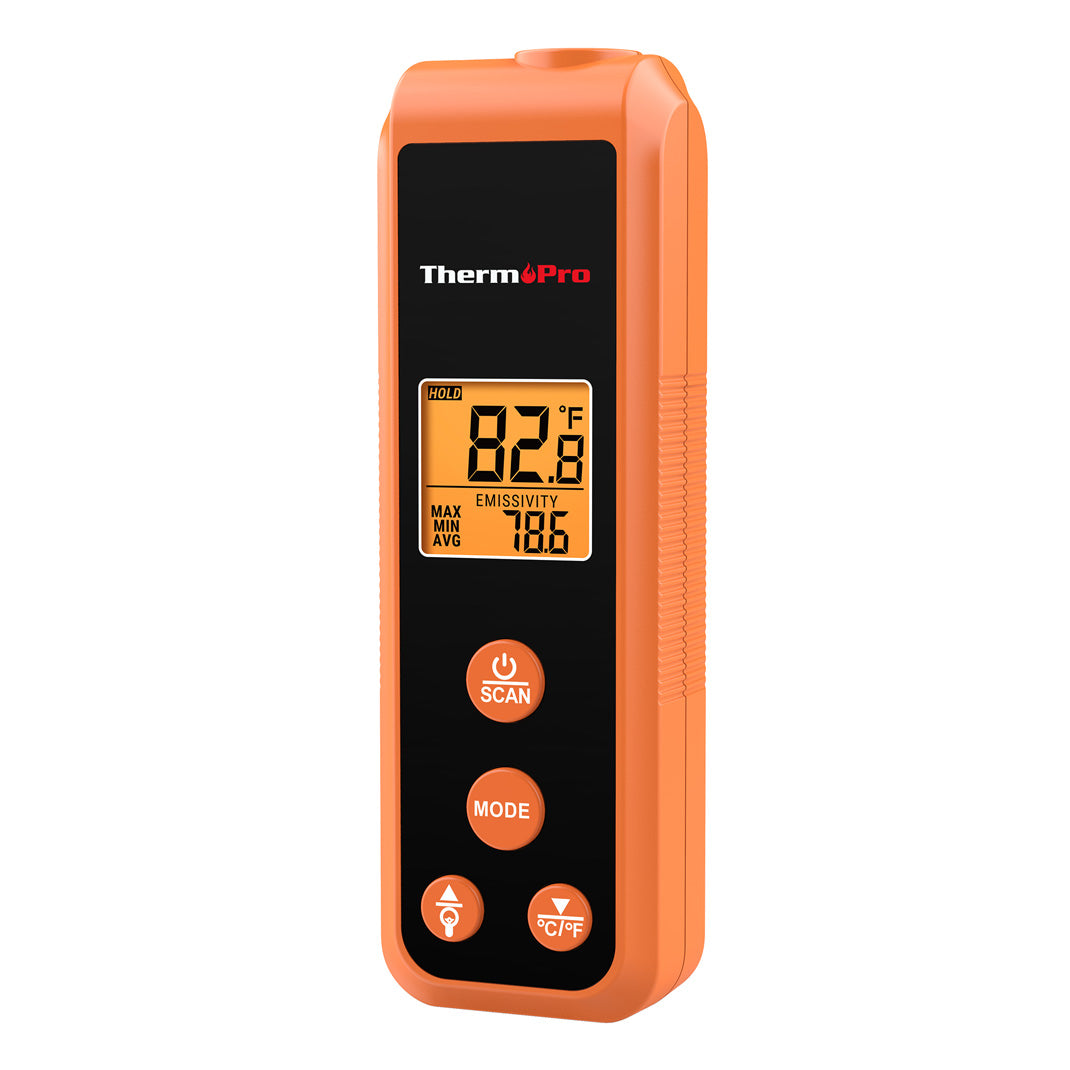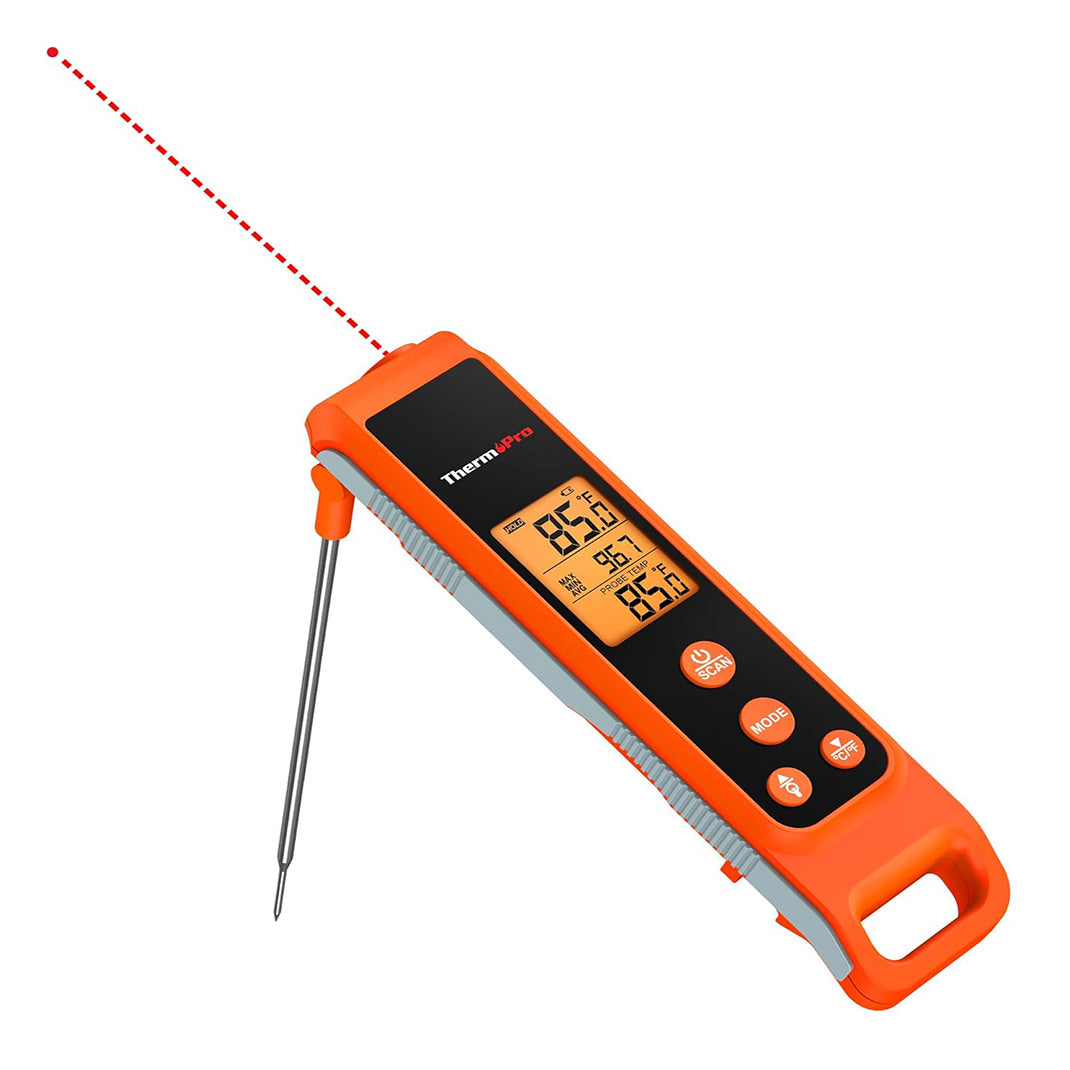What is an Infrared Thermometer?
Before understanding how to use an infrared thermometer (IR) for cooking, let’s quickly talk about how this device works. Often called a laser thermometer, this device measures the precise temperature of an object from a distance without the need for physical contact. Because of its unique capabilities, an infrared (IR) thermometer is often used in clinical and industrial fields in which objects are fragile or temperature taking is complicated. Moreover, an IR thermometer device quickly provides results with precision and accuracy.
Basic Operating Principle
Every object contains atoms constantly in motion, especially when subjected to temperature. Because they are continually moving, these kinetic molecules give off infrared radiation. IR radiation features a longer wavelength that is difficult to see with the naked eye. Although invisible, this infrared radiation can be seen by infrared thermometers and used to estimate the precise temperature of the object.
Applications, Advantages & Disadvantages of Using Infrared Thermometer for Cooking
When a meat or another ingredient is cooking in an oven or grill, it radiates a certain amount of infrared radiation. An infrared thermometer for cooking can be used to measure and display the surface temperature of food during the cooking process.
What are the Applications of an IR Thermometer for Cooking
If you think that the use of IR thermometers is just limited to meals involving meats, you would be wrong. Here are the applications of IR thermometers in cooking.
To Check the Oil Temperature
Have you ever felt unsure whether the oil in the pan is ready for cooking? It can be confusing to tell. However, you can be sure by using an infrared thermometer to measure the surface temperature of your frying pan.

To Measure Surface Temperature
An infrared thermometer can accurately determine the temperature of cooking surfaces such as skillets, pans, and grills. It helps the cook know whether or not the surface is adequately heated and ready for the next step.
Baking Cakes or Preparing Sugar Syrups
If you are a baking lover, an infrared thermometer can be really useful. You can determine the surface temperature of sugar syrups, melted chocolate, or cake without the need for physical contact.
For Checking the Refrigerator Temperature
You can also use an infrared thermometer to measure the temperature of the fridge and adjust it according to your needs.
Grill and Oven Monitoring
The last and most important application of the IR thermometer for kitchen use is that it helps measure the heat distribution within the cooking space of grills and ovens, allowing you to understand this particular cooking environment.

Major Advantages of Infrared Thermometer in the Kitchen
Infrared thermometers have been used in commercial and personal kitchens for decades. Here are the advantages that infrared thermometers provide in the kitchen.
Quick and Easy Use
One of the major benefits of IR thermometers in the kitchen is their easy operation. Other types of thermometers require direct contact with the food, and thus, you’ll need to clean them after every use. However, that’s not necessary with an IR thermometer. All you need to do is point the IR thermometer at the target and it will automatically display its accurate temperature.
Protects the Appeal of the Food
If you use regular probe thermometers, you’ll need to pierce them into the food. For example, if you want to check the temperature of a piece of meat, you will need to insert the temperature probe inside it, thereby leaving a hole in the meat and ruining its visual appeal. But since an IR thermometer doesn’t require direct contact, this is something you don’t have to worry about.
More Hygienic
By eliminating the need for direct contact, an infrared thermometer reduces the risk off cross-contamination.
Limitations of IR Thermometers in Cooking
Although infrared thermometers can measure temperature without contact and are very practical, they also have some limitations. Understanding these limitations can help you make informed decisions when choosing a thermometer that can ensure accurate and reliable temperature readings.
Surface Temperature Only
IR thermometers primarily measure the surface temperature of objects and cannot provide internal temperature data. This means they are unsuitable for situations that require internal temperature measurements, such as cooking meat. In this case, it is better to use a wireless meat thermometer or an instant-read thermometer to measure the internal temperature of food.
Reflective Materials Affect Accuracy
The reflectivity of different materials can vary, impacting the accuracy of readings from IR thermometers. For instance, smooth or polished metal surfaces may reflect infrared radiation, leading to inaccurate measurements.
Environmental Interference
Environmental factors such as smoke, steam, or dust can interfere with the infrared signal, affecting measurement results. This means that using IR thermometers in less-than-ideal conditions may yield inaccurate readings.
Distance and Field of View Limitations
IR thermometers have limited measurement distances, and measuring from too far away can result in inaccurate readings. Additionally, the distance-to-spot ratio (the ratio of the measurement area to the distance) can also affect measurement precision.
Ineffectiveness on Transparent Objects
IR thermometers cannot accurately measure the temperature of transparent objects. This limits their use in certain applications.
Best Infrared Thermometer for Cooking
ThermoPro TP450 Dual-Laser Infrared Thermometer is one of the best infrared thermometers for residential and commercial kitchens for various culinary purposes. From ease of use to dual laser technology, here are the features that make the ThermoPro TP450 a standout device.
Dual-Laser Technology
Dual-laser technology provides high accuracy. It improves overall precision even from a distance. Plus, there is an adjustable emissivity feature that enhances accuracy when measuring surfaces of varying reflective indexes and textures.
Wide Temperature Range
The TP450 offers a wide temperature measuring range that stretches from -58°F to 1022°F (-50°C to 550°C). Thus, it is suitable for numerous tasks such as monitoring the heat of a cold refrigerator to taking the temperature of a heated grill or oven.
Versatile Design
Even beyond kitchen use, this thermometer can be used to measure the surface temperatures of things like pizza ovens, griddles, and even home HVAC operations, making it perfect for home and industrial use. Moreover, the device features an easy-to-read display that ensures clear visibility even in low-light conditions.






 288 Comments
288 Comments
